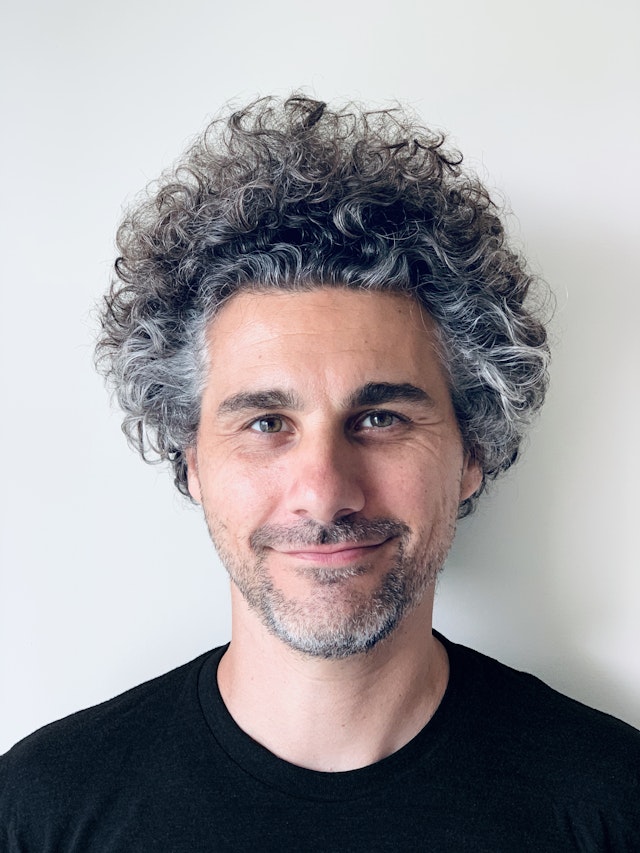How should agencies invest in virtual production techniques? Business leaders weigh in
As more production and creative agencies turn towards virtual production techniques, we ask how they weighed up the pros and cons of their investments in this developing practice.

How should agencies weigh up investments in virtual production?
More and more agencies are turning to virtual production methods, such as Unity and Unreal Engine, to get the job done. And as The Drum’s Ellen Ormesher recently reported, they’re increasingly using such means to keep a lid on emissions.
It’s a promising development for businesses hoping to speed along real change and make the industry more sustainable. But it’s not something that can be set up overnight – and as with any investment, there are pros, cons and opportunity costs involved. So, we asked over a dozen agency experts how they were approaching the decision to invest in virtual production techniques.
Advertisement
How do you solve a problem like... investing for the future?

Matt Burt, director of business operations, R/GA London
The pandemic forced us into looking at alternative modes of production – ones centered on using technology to reduce the number of people physically at a shoot whilst still meeting the high standard of creative output our clients’ demand. We’re now building on this progress and testing long-term sustainable production methods that have technology at their core but also a positive impact in areas to reduce environmental impact.
As a purpose-driven company, we have clear strategic priorities to achieve the highest standards on ESG. These include climate action, ED&I, data ethics and privacy. With emerging technologies, including AI and how that impacts creativity, we’re testing and learning to understand how tech can support in delivering best-in-class work for clients, and help us achieve the targets we’ve set. Carrying out this due diligence then determines our investment strategy in introducing new tech on client work. It’s not going to happen overnight, but taking the necessary amount of time will ensure the right decisions are being made.
Advertisement
Robert Godinho, managing director, Media.Monks India
Virtual Production isn’t an investment in the ’future’ any more. It is the present. And you don’t need a lot of moolah to get started on the path of being a business with virtual production capabilities. When we realized its potential back in 2019, we planned to scale it in three phases.
Phase one was the most significant investment that I believe any business should make: the people who believe in the vision and the artists who can execute it. This technology is so new, and it is the confluence of art and tech, which is a very niche market. The valuation of art is just as high, if not more, than the valuation of the studio. We already had our animators working on Unreal Engine, which is free to use, so the choice of software was also very clear from the beginning. Software and hardware keep evolving and getting redundant as we move forward in this direction, so we make our decisions accordingly.
Phase two was to build the studio. If the business already has its own conventional studio, it can easily transform it into a Virtual Production Studio. All you need is to set up the LED volume. But only once you identify and fortify artists would anyone advise you to move to these last two stages.
Phase three was to pick the right equipment. We invested in efficient but not state-of-the-art trackers, which one can keep upgrading based on the ROI being generated. Besides, one can always rent it too.
Suggested newsletters for you
Matt Bonin, managing partner, head of entertainment and production, Alto New York
Brand-world production benefits from advancements in entertainment; the gold standard for virtual production is StageCraft, from ILM, for The Mandalorian from Disney, which leverages Unreal Engine to realize fully immersive 3D worlds. Investment in this would never have been possible for a commercial, but we will undoubtedly use this technology regularly in the future. I think wider-scale adoption happens when a single shoot day using StageCraft and Unreal costs less than a live-action day on location for a commercial. We’re not far from that reality, but until then, it will be special creative and brand needs that use this.

Doğan Dattilo, group director, production, Saatchi & Saatchi
Virtual Production is a versatile capability that gives us greater control in areas usually defined by nature. The ability to control time with a never-ending golden hour, to move from mountains to cities and other worlds instantly, and to be able to do that all in one space is revolutionary for both creativity and production.
Possibly the most important impact for humanity is that we are also more sustainable. Reduction in travel, reduction of human footprints in environments, and for automotive specifically – less hauling of a very large product.
Our investment is two-fold – developing these capabilities/stages as a smart-spend offering for our Clients and continuing to expand creativity for their brand, but also as a real and genuine opportunity to impact the planet hand in hand.
Danny Miller, executive vice-president, director of content production, EP+Co
Invest in the areas that will directly serve your clients, but also consider what might give you serious marketing power. Being able to produce broadcast-quality content without always having to go out-of-house means you can provide brands with highly efficient creative that also answers to your standard for great storytelling. Over the past five years, we’ve equipped a 15,000-square-foot production facility with an industrial kitchen, stages, a metal and woodworking shop, as well as a C20 SISU cinema robot. Why? To maximize production capabilities within our own walls. As a result, we’re able to say yes to nearly any challenge.
Nancy Hacohen, managing director of content, Tool
Here at Tool, virtual production is rapidly becoming an indispensable asset. On volumetric stages, we can adjust lighting, angles, and set elements while seeing the results immediately as opposed to creating the whole thing in post afterward. And when clients want to shoot their featured locations repeatedly, the up-front investment in virtual art direction eliminates the need to create (and store) sets of space, or interrupt operations at a physical location. It’s also a great tool for logistical problem-solving, such as when working with high-level celebrities who have specific security concerns and limited shooting time.
Holly Walton-Gould, strategy director, That Lot
Our pathway is more about incremental upgrades than all-or-nothing. We already do motion tracking, live graphics on broadcasts, VFX and AR work. It’s about combining these skill sets and making them work better in real-time. Our 3D artists are experimenting with creating scenes in Unreal, and our studio has been built ready for camera trackers and background 3D rendering machines to plugin easily. We have a backlit LED cyclorama, the full LED video screen wall doesn’t feel necessary yet. We expect to use Unreal to make long-form/series pilots quicker, more agile and more environmentally responsible by removing location shoots where possible.
Simon Hewitt, founder and chief exec, Orange Panther Collective
Saves the planet, saves money, is flexible - plus benefits the UK production industry. What’s not to like? I can’t argue with most of this but… cue a slight wince… is the creative genuinely just as good?
For me, VP definitely has its limits in terms of craft and therefore cut-through but it seems the point is more about the need for a trade-off between creative integrity and the negative impact shoots have on our planet. So while I’d always say I’m a creative purist, in this instance, my allegiance is definitely with the bigger picture.
Anton Christodoulou, group chief technology officer, Imagination
Unreal’s ability to create hyperreal environments and lighting and its extensive integration with other tools make it the weapon of choice for in-camera VFX, which is what most people know and understand virtual production to mean right now. Training your creative teams is the first and most important step. Working in a ‘real’ virtual environment rather than on-location or even green screen significantly reduces post-production and increases pre-production planning, so training project managers are also essential. Not everyone has to be an expert, but it is critical that everyone has a baseline understanding of real-time and VP workflow, to get the most value out of this new approach.
Allen Perez, senior vice-president, creative director of production, Orci
Technology that allows for a project or parts of a project to be completed virtually has been around for a while; shooting, color grading, recording, etc... Covid-19 simply brought it to the surface and showed that some agencies weren't prepared for the shift. But the reality is that we should always be asking ourselves whether our presence is required or if something can be accomplished virtually, and use that understanding to drive our decisions. You don’t need a whole team going out to shoot a sunset. Digital production and key crew connected via satellite and HD resolution monitor connected via the web can do the trick beautifully, and the same applies to other disciplines of production. We’ve already shown that we can do this well and with financial and environmental costs in mind, so I expect the trend to continue. But even then, there’s one thing I always aim for – and that’s being present at the online and final mix.
Richard Ryan, creative director, Something Different
Technology changes so quickly and dramatically that choosing where to invest is tricky. Technology like The Volume (famously used in The Mandalorian) in the hands of production houses can be game-changing, reducing location shoots and making reshoots of entire scenes a no-brainer. But it’s so infinitely powerful that it’s almost overwhelming. And the investment costs, even for smaller versions of it, are scary. So perhaps, it’s trying not to be too obsessed with the tech itself. That tech will be different next year. If you stay true to your creative ideas and ideals, those come through whatever tools you use. Ideas live or die in the execution: preparation, performance, direction, cinematography and conception. A misstep in any of those makes any savings worthless. Tech is a tool. What makes it magical and powerful is you and your team.
Want to join in the conversation? Get in touch: sam.bradley@thedrum.com

